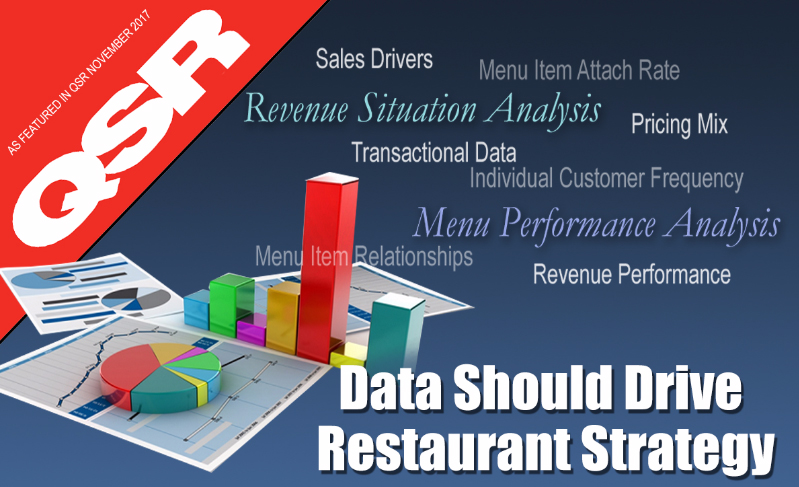Ad man David Ogilvy once wrote, “Marketers tend to use research like drunks use lampposts, for support not illumination.” This is certainly true with regard to recent breakthroughs in large-scale data storage and analysis. While these new applications have supported successful efforts to improve store operations and individual customer connections, too many restaurant industry marketers continue to limit use of data analytics to justifying promotional program sell-in.
This proof of Ogilvy’s adage is bad enough, but the greater sin is that large-scale data analysis is being ignored as a strategic marketing tool at a time when the restaurant industry needs it most. Today, quarterly financial results are celebrated infrequently as chains and franchise marketers struggle to find growth formulas. But there is actually some good news. Improved data availability and analytic applications now allow them opportunities to build new strategic understandings at the enterprise level. Here are two of them.
Revenue Situation Analysis
Revenue Situation Analyses is a thorough review of restaurant sales drivers and their relationships to one another from the outlet to the enterprise level. Using detailed transactional and customer data provides a foundation for the strategic understanding necessary to develop sound marketing strategy. Confronted with the challenge of growing system and same store sales, marketers need to identify opportunities across multiple revenue-driving levers, such as individual customer frequency, additional menu item attach rate, and promotional & pricing mix.
A recent consultation with a large coffee chain illustrates how Revenue Situation Analysis can be used to successfully set strategic priorities that address chain-specific needs. In this case, by applying analytic approaches to identify food attach rate at the drive-thru as a key revenue opportunity. The chain, which has very healthy same-store sales, wanted to identify additional sales platforms in order to accelerate growth. The Revenue Situation Analysis demonstrated that the food attach rate to beverage sales, a key check driver in this environment, was half the rate of transactions purchased inside the outlet. This analysis documented the need to dedicate resources to the development of programs to increase the drive-thru food attach rate.
The client said, “This seems so simple in retrospect but—without the deep analytic dive—we would have gone on blissfully unaware of this need.”
Menu Performance Analysis
Menu Performance Analysis is a complementary analytic tool. It is a comprehensive review of revenue performance of menu items, their related transactions, and relationship with other menu items, that follows the Situational review. In the case of the coffee chain, menu items, transactions types, and customer segments that needed targeted approaches, solutions, and programs to enhance food sales were identified. For example, it was discovered that, along with its lower menu price, regular brewed coffee transactions had the lowest check and profitability due to the lowest food attach rate of all drive-thru transaction types. Subsequent analysis demonstrated the potential value of improving sales of foods with regularly brewed coffee transactions, and ultimately justified a significant marketing investment to address this newly discovered opportunity.
As an example of the depth of the data dive, analyses of brewed coffee transactions that included food from the chain’s customer loyalty database led to an understanding of the specific food menu items that had the highest attachment potential. Building sales and merchandising programs featuring those items provided the highest likelihood of successfully growing sales.
Conclusion
Leveraging huge databases and sophisticated analytic tools allows today’s marketers to build programs tailored specifically to the needs of their chain, geographic segment, outlet, transaction type, and customer. Experience demonstrates that these targeted solutions provide much higher success rates and return on marketing investment.
This argues for the use of data analytics to first determine strategic marketing imperatives and then to continue to use analytic approaches to prospect the customer base and grow sales in unprecedented ways. For example, analyzing specific merchandising initiatives—such as the effectiveness of Menu Board communications—will result in the identification of new opportunities. King-Casey are experts in menuboard and merchandising optimization.
For more information please contact:
King-Casey (USA), Howland Blackiston, Principal, T: +1 203 571 1776
Subscribe to our free mailing list and always be the first to receive the latest news and updates.

